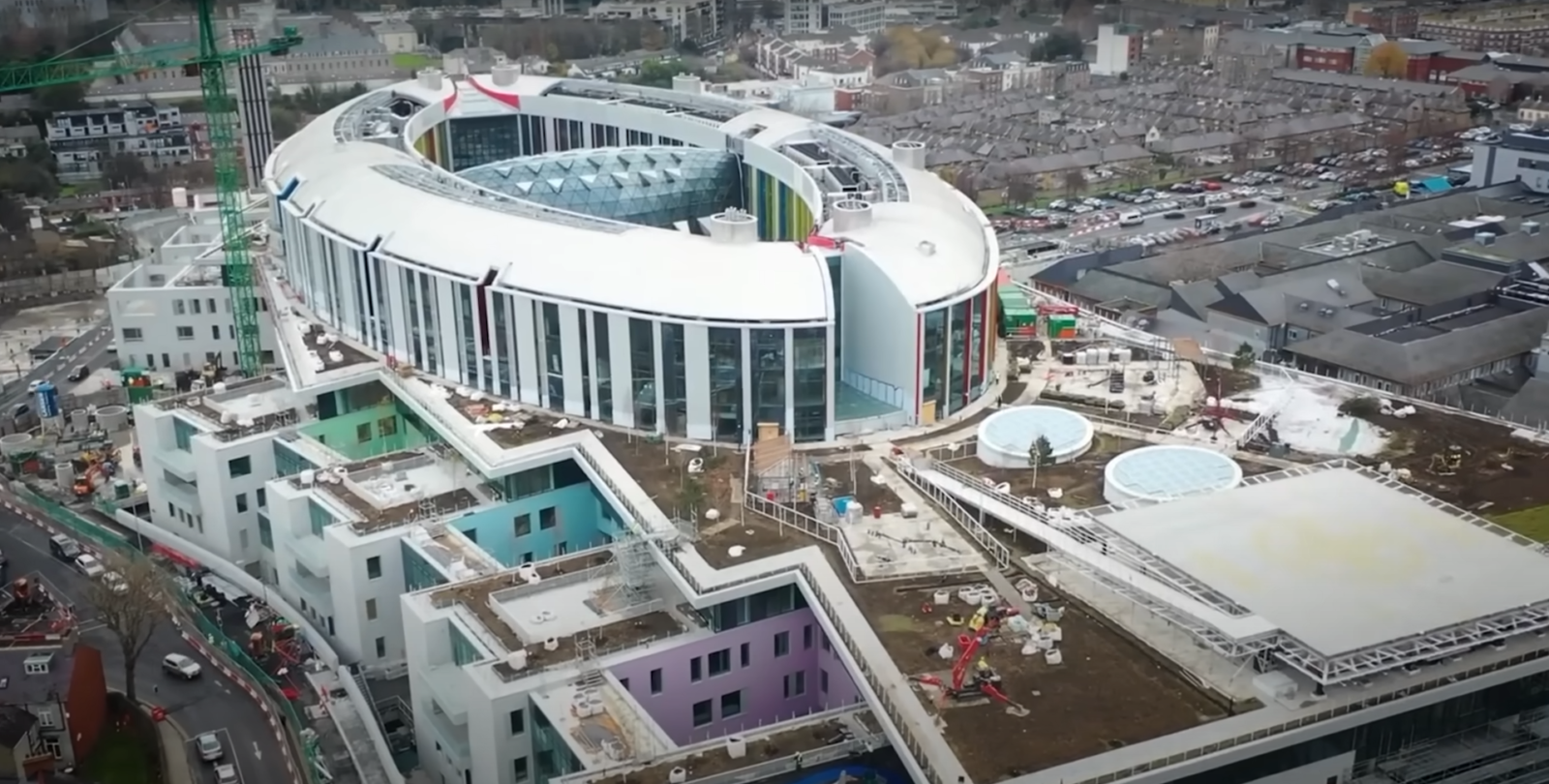The Irish Government’s Epic Failure: The Children’s Hospital Becomes the Most Expensive Building in History

The long-awaited National Children’s Hospital in Dublin was meant to be a beacon of hope for Irish families, providing world-class healthcare for the nation’s youngest citizens. Instead, it has spiraled into one of the most expensive buildings ever constructed, a testament to bureaucratic mismanagement, budget overruns, and a complete lack of accountability.
A Much-Needed Hospital
For decades, Ireland’s healthcare system has cried out for a state-of-the-art facility dedicated to children’s healthcare. Dublin, with its aging hospitals and outdated facilities, needed a modern solution to meet the growing demands of a young population. When the government finally announced the construction of the National Children’s Hospital, it was hailed as a long-overdue project that would put Ireland at the forefront of pediatric care in Europe.
However, what was supposed to be a triumph of Irish healthcare quickly turned into an international embarrassment. Initially budgeted at a relatively modest €800 million, the project has exploded into a colossal €2.5 billion undertaking—making it one of the most expensive buildings ever constructed in history, and it isn’t even finished.
Budget Blowouts and Bureaucratic Chaos
The most glaring issue surrounding the Children’s Hospital is its absurd cost. Originally estimated at €800 million, the project has ballooned to more than three times that amount, and it’s still rising. Why? The reasons range from construction delays, mismanagement of funds, poor planning, and a complete failure to anticipate basic issues, such as site location and material procurement.
The hospital, still under construction in the Dublin suburb of Rialto, has faced numerous delays. The completion date has now been pushed back to 2024, years beyond the initial deadline. Construction began in 2016, full of promise, but the years since have seen nothing but frustration and anger from the public, the government, and even healthcare professionals who will one day have to rely on the facility.
A Government Failure of Epic Proportions
What is perhaps most alarming about the project is the Irish government’s complete lack of oversight and accountability. Despite repeated warnings about the escalating costs and glaring inefficiencies, the project continues to bleed money, with no one stepping up to take responsibility for its failures.
Each new report detailing more excuses and justifications for the staggering costs only deepens public frustration and erodes trust in the government’s ability to manage the project. At €2.5 billion, the Children’s Hospital now rivals some of the most expensive buildings in human history, far surpassing hospitals built in wealthier nations like the U.S. and Germany.
The Price of Inaction
With the current price tag sitting at an astronomical €2.5 billion, taxpayers are left wondering: is this worth it? For that sum, Ireland could have funded several new hospitals across the country or significantly upgraded its crumbling healthcare system. Instead, Irish citizens are footing the bill for a monument to governmental failure.
When completed, will this hospital even live up to its intended purpose? Can it justify the title of one of the most expensive buildings in history? Or will it stand as a glaring symbol of unchecked spending and bureaucratic incompetence?
Conclusion
The National Children’s Hospital was supposed to symbolize Ireland’s commitment to providing cutting-edge healthcare for its youngest citizens. Instead, it has become a staggering example of inefficiency, waste, and poor governance. As one of the most expensive buildings in human history, it serves as a cautionary tale of how quickly a public project can spiral out of control when transparency, accountability, and competence are absent.
If Ireland is to learn anything from this €2.5 billion catastrophe, it must demand far greater oversight in future public projects—before yet another monument to failure is built at the taxpayers’ expense.








